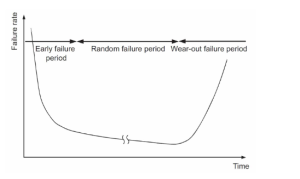Equipment used in semiconductor testing relies significantly on the semiconductor industry which drives various sectors such as consumer electronics, automotive, and healthcare through several developments. There have been substantial growths in the American semiconductor testing industry over the years due to advancements in technology, increased demand, and strategic investment.
Top Semiconductor Stocks and ETFs
In mid-2024, the largest semiconductor stocks by revenue (trailing 12 months) are as follows:15
- Samsung (005930.KS)—$197 billion
- TSM—$74 billion
- NVIDIA—$61 billion
- Intel—$54 billion
- Broadcom—$39 billion
- Qualcomm Inc. (QCOM)—$36 billion
- ASML Holding N.V. (ASML)—$30 billion
- Applied Materials (AMAT)—$26 billion
- Advanced Micro Devices Inc. (AMD)—$23 billion
- SK Hynix (000660.KS)—$22 billion
This industry cannot operate without semiconductor testing that acts as a check-up point for the reliability and functionality of chips before they hit the market.
Steps for Semiconductor Testing
Semiconductor devices have to go through several stages of testing to evaluate their performance and quality. These stages include wafer testing, where chips are tested on silicon wafers, and final testing after packaging of chips. The main goal is to detect defects, ensure conformance to specifications as well as guarantee reliability under different operating conditions. In line with this, it has become imperative that more sophisticated test methods are devised for increasingly complex semiconductor devices.
The reliability of semiconductor devices can be related to the failure rate curve called the: bathtub curve.

Growth Factors
Among the major forces behind growth in the semiconductor sphere are artificial intelligence (AI), (IoT) and 5G technology. These developments require more powerful, efficient and reliable semiconductor devices hence the need for thorough quality assurance measures through rigorous testing procedures. For example, high-performance chips with low error rates are necessary for AI applications, as opposed to IoT devices which need those that function properly in diverse settings. In addition, the importance of robust semiconductor testing in relation to autonomous vehicles cannot be overstated since these are designed with complex chips that control the safety functions.
Increasing Demand for Semiconductor Devices
The global demand for electronic products including smartphones, laptops, smart home gadgets has led to a rise in the semiconductor market. In addition, the COVID-19 pandemic has accelerated this trend because working from home and homeschooling made people purchase more electronic devices. According to studies published by various news agencies; world sales will reach $6.7 billion by 2025 of which the US accounts for a large share as evident from the statistics published.
Strategic Investments and Government Support
To protect the semiconductors sector, the US government has taken action. The CHIPS for America Act which is part of the broader National Defense Authorization Act aims at increasing semiconductor production and research investments within America’s boundaries. As a result of such legislative support, measures have been put in place that are meant to boost the United States’ semiconductor testing capabilities hence attracting major industry players’ investments in this field. This has seen companies like Intel, Texas Instruments, and GlobalFoundries announce huge investments geared towards expanding their testing facilities in the US thereby revitalizing our economy through more such initiatives.
The act includes $39 billion in subsidies for chip manufacturing on U.S. soil along with 25% investment tax credits for costs of manufacturing equipment, and $13 billion for semiconductor research and workforce training, with the dual aim of strengthening American supply chain resilience and countering China.

Emerging Trends and Innovation
Many emerging trends shape our future in semiconductor tests. Thus new testing techniques are needed for processor performance and reliability because advanced packaging has been developed such as System-in-Package (SiP) or 3D stacking. Moreover, AI and Machine Learning Integration increases testing efficiency as well as accuracy during the process.. By using them in predictive maintenance, real-time monitoring, and automated decision-making, these technologies decrease testing costs and time constraints.
Challenges and Opportunities
Even though the semiconductor testing industry has been growing, it faces several challenges. With each new development in technology comes rapid changes within methodologies needed for adequate tests on semiconductors. To keep pace with modern semiconductor devices’ complexity there exists a need for highly skilled personnel with specific abilities which are rare. However, such obstacles are potential opportunities for innovation and cooperation. This means that partnerships involving semiconductor companies, testing equipment vendors, and universities can help develop leading-edge test solutions such as Artificial Intelligent machine-based ones.

